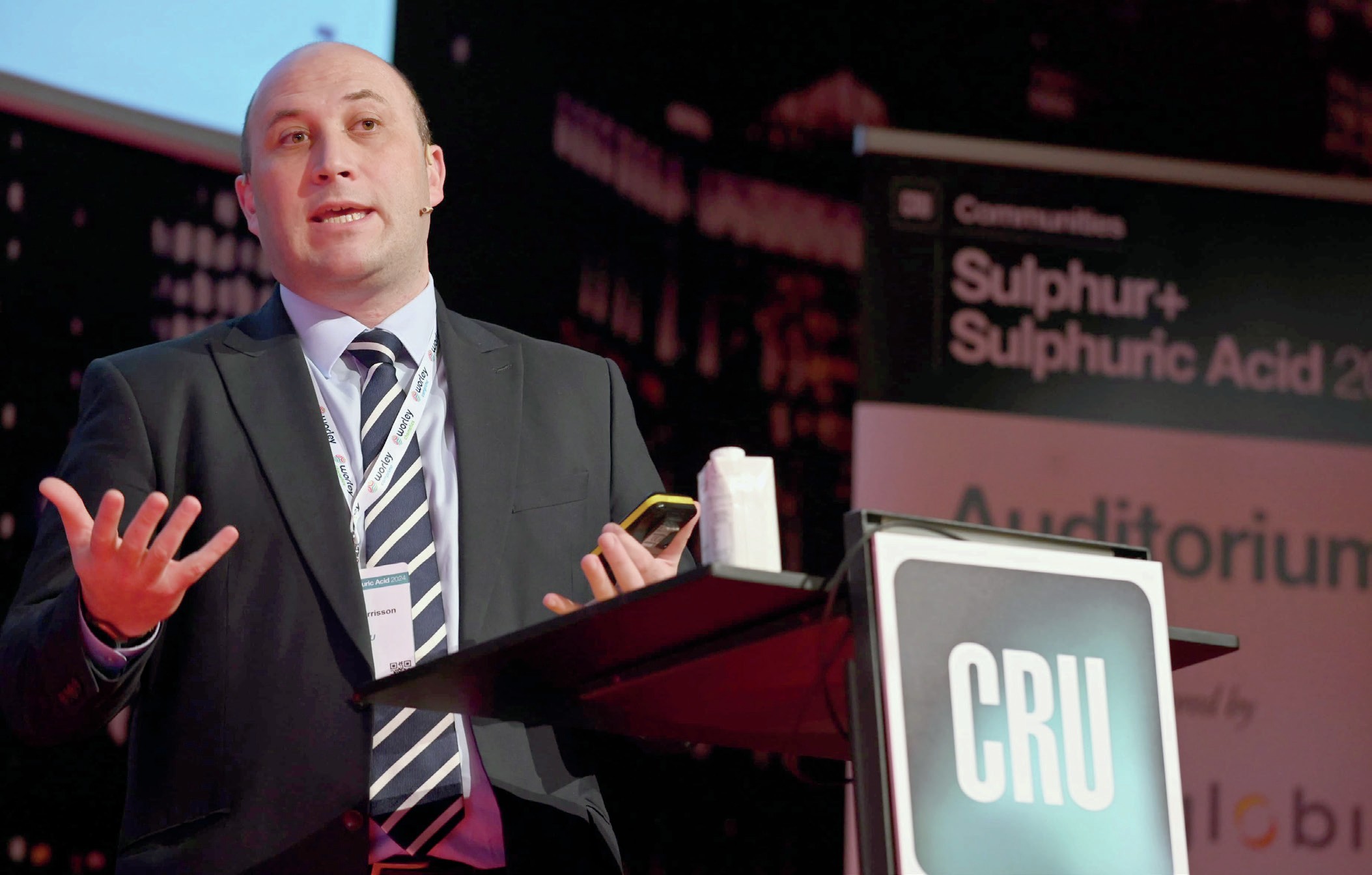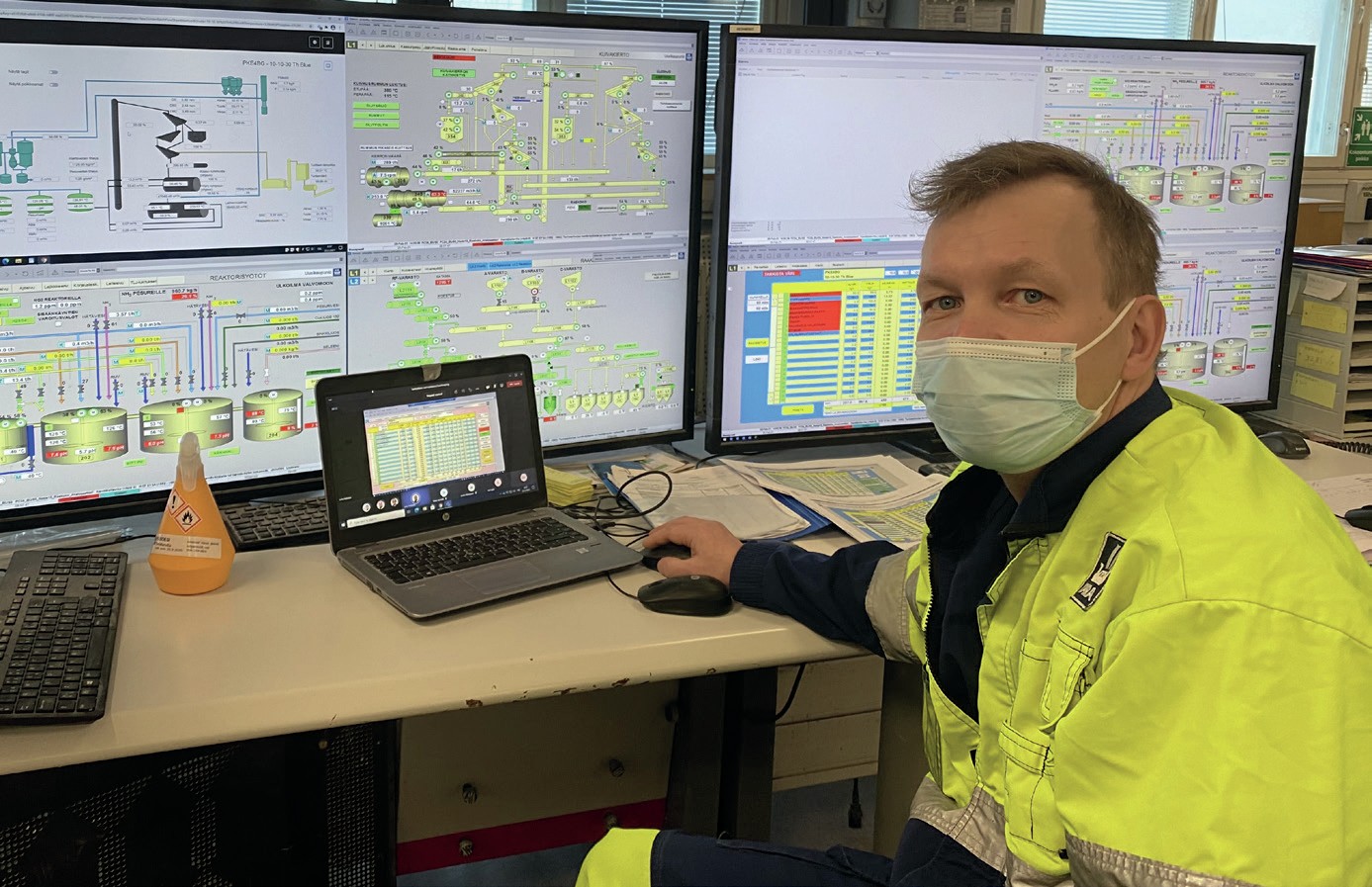Fertilizer International 508 May-Jun 2022

31 May 2022
Fast delivery of productive, efficient green ammonia plants
SUSTAINABLE PRODUCTION TECHNOLOGY
Fast delivery of productive, efficient green ammonia plants
By using modular construction, operational modelling and digital plant control, thyssenkrupp Uhde can offer customers fast-build, capital efficient green ammonia plants. Dr Christian Renk and Dr Klaus Nölker explain the company’s innovative approach to plant construction, design and control.

Future global demand for green ammonia is expected to be enormous, according to the latest market forecasts. This will require generation of green ammonia on a very large scale. Indeed, this is already being reflected by market activity. Every week, new supply contracts and production and storage projects are announced. Delivering worldwide production capacities for green ammonia from currently confirmed projects – and those coming down the track – will therefore be a huge challenge for the industry. thyssenkrupp Uhde, as a major supplier of green ammonia plants, will need to respond to and meet this challenge. The company is deeply involved throughout the whole green chemicals value chain – with capabilities ranging from renewables to electrolysis (through its affiliate thyssenkrupp nucera), to green ammonia production and storage, as well as ammonia cracking for green hydrogen production.
This article explains how thyssenkrupp Uhde is delivering highly productive and operationally reliable green ammonia plants, in a rapidly growing market, by meeting the following three customer requirements:
- Fast and safe plant delivery
- Optimisation of hydrogen storage size versus plant capacity
- Improved digital control systems for plant operations.
Multiple challenges
Delivering the large numbers of green ammonia projects that will be necessary to satisfy future capacity requirements presents many challenges. This task will only be achievable, for example, if plants are built much faster than usual. Yet, at the same time, they will also have to be constructed to the same quality and safety standards applied by thyssenkrupp Uhde to its previously completed 130 grey ammonia plants.
Naturally, green ammonia plants will also need to be built in the best locations for harvesting renewable energy. These are mostly remote and wild places where intensive solar radiation, strong and steady winds, and enduring water flows can be found – either alone or in combination. Unfortunately, the present infrastructure in these distant sites is generally either very limited or non-existent! This makes the construction of green ammonia plants both very time consuming and cost-intensive.
Modularisation
If thyssenkrupp Uhde is to master the challenge of faster plant set-up at reduced costs, while maintaining high safety standards, the best option is to shift construction activities away from the project site – and move to off-site modular construction in fabrication shops or yards instead. thyssenkrupp Uhde already has excellent modularisation capabilities at its centre of competency, part of the company’s Thailand subsidiary.
The ability to complete pre-assembled modules and racks demonstrates the value thyssenkrupp Uhde can offer customers, especially when combined with its proven planning, design, logistics, hook-up and commissioning processes. Options for modularisation are generally evaluated with the customer at the outset of every project. The most appropriate construction option is identified, after reviewing the client’s needs, the project’s size, the installation site and other factors.
thyssenkrupp Uhde has been offering green ammonia plants in two pre-modularised capacities (50 t/d and 300 t/d) for several years (Fertilizer International 488, p33). More recently, further pre-modularized capacities have been added to meet customer requirements and keep up with rising market demand.
The range of standard-size green ammonia plants now includes 600, 1200 and 3,400 t/d modular units. 3D models have been created for these larger size modules (Figure 1) and the necessary detail engineering is also in place. The ability to offer larger capacity production modules speeds up the bidding phase and makes this more accurate. They will also help fast track project engineering during the subsequent installation phase.
In summary, the modularisation of green ammonia plants offers the following advantages:
- Reduces construction time at the final site
- Reduces construction phase risks and increases construction safety
- Less on-site personnel are required during the construction phase
- Shorter commissioning phase due to use of pre-cleaned and pre-tested equipment/piping within the modules
- Allows modules to be fabricated in the best cost countries possible
- Modules generally show higher build quality due to better tool use in a controlled workshop environment
- Transportation limits can be overcome with correct module sizing l Modularisation makes it possible to take advantage of serial production.

Operational modelling
The variable and intermittent nature of renewable energy sources is a major production challenge for green ammonia, especially when it comes to powering the upstream electrolysis unit with renewables.
Hydropower is more or less stable and, in theory, we can predict times when the sun provides solar energy to the plant. But what about clouds appearing – and how fast will wind speeds rise or fall? With all these combined variables creating uncertainties, predicting the supply of power from renewables comes down to statistics and probabilities.
Help is at hand, however, as thyssenkrupp Uhde’s RHAMFS® modelling tool (Figure 2) can accurately simulate green ammonia plant and system behaviour. Based on the predicted energy availability profile, it determines the most suitable ammonia production capacity, and hence the required plant turndown and the load changes per day, and sizes the hydrogen buffer (storage capacity) accordingly. This combination of adjustments smooths the load profile and compensates during periods of low or zero renewable power availability.

By tailoring plant parameters in response to fluctuating renewable generation, the RHAMFS® tool is used to set both plant capacity and to keep the required hydrogen storage to a minimum. Minimising hydrogen storage is valuable as cuts both capital costs and operating costs (by reducing the quantity of hydrogen that needs to be cooled and pressurised). Less storage also reduces the loss of highly volatile hydrogen. The ammonia plant controller also reacts very quickly to power fluctuations by adjusting the turndown ratio in the plant.
Essentially, to deliver the same production output over time from a given power profile, the green ammonia plant operates between two design extremes:
- Sizing the plant for peak power availability: this results in a high level of plant underutilisation over long intervals and therefore comes with a cost penalty
- Sizing the plant for average power availability: this requires large hydrogen storage capacity which also incurs a cost penalty
- These two extremes are a good way of visualising the challenge presented by renewable power intermittency.
One function of the RHAMFS® tool is to determine the optimum plant characteristics for each customer – by combining a certain degree of overdesign with the optimum hydrogen storage size. Using this tool, the ammonia plant’s turndown operation will improve as the hydrogen storage size becomes smaller.
The key features of the RHAMFS® tool (Figure 2) include:
- Economic modelling of both centralised and distributed hydrogen and chemical production units
- Real-time modelling of electrolyser utilisation and production
- Chemical export value chain modelling
- Hydrogen storage optimisation
- Sector coupling assessment
- Total cost of ownership
- Estimation of carbon emissions offsets.
With RHAMFS® , the customer will get a green ammonia plant with optimised capital investment, operating costs and production capacity. But how are the turndown ratios handled when the plant goes online? This is a critical operational issue for several reasons.
For example, extended residence times in the ammonia reactor due to lower turndown can risk creating hot spots inside the catalyst bed and/or inactive zones where under-utilised catalyst has cooled down. Instead, the catalyst needs to be kept hot and maintained within its active temperature range. This enables an accelerated and automatic resumption of production as soon as more feed gas is available. Catalyst crushing caused by thermal expansion and contraction is also avoided. Furthermore, a stable and sufficiently high overall circulation rate needs to be maintained to avoid channelling inside the catalyst beds and meet compressor surge limitations. Additionally, major pressure and temperature changes should be avoided to prevent equipment fatigue.
Digital plant control
In general, chemical plants are not designed for high turndown ratios and fast load changes. This is certainly true of a conventional ammonia plant. Yet experience shows that stable and continuous operation at 25 percent of design load is possible. This has been practically demonstrated at conventional thyssenkrupp Uhde ammonia plants without any technical modification. Furthermore, turndown ratios as low as 10 percent are possible, if requested by the customer and necessary for optimal plant operation, although design changes and additional control functions are required.
thyssenkrupp Uhde has developed an improved digital Master Controller for highly flexible ammonia synthesis. Using advanced digital solutions, this optimises plant operations for large-scale direct coupling with renewables.
The Master Controller adjusts ammonia production to the forecasted flow of green hydrogen. This ensures the minimal hydrogen storage installed is utilised in an optimum way. Furthermore, production ramp ups and ramp downs at the green ammonia plant are handled as quickly and as efficiently as possible. At the same time, all operations are conducted without any apparent pressure change in the ammonia synthesis section.
The improved digital Master Controller, by preventing the above-mentioned hot spots from forming in the most active first catalyst bed, also ensures that no unconverted gas is left for the downstream beds. This is achieved by increasing ammonia inlet content at higher separation temperature. This patented approach is combined with the sophisticated use of process bypass valves. An external heating source such as a start-up heater can also maintain the required temperature in the first bed.
Grid-supplied green electricity can also be used as an alternative power source during times of low renewable electric power availability (and hence low hydrogen). For example, around 1 MW of electric power can generate roughly 0.1 t/h of H2 / N2 mixture (via electrolysis, air separation and compression to 20 MPa) which then releases about 0.08 MW of reaction heat to maintain the converter temperature.
If green electric power is not available, the same amount of reaction heat can be generated by directly applying 1 MW of standard grid power to electrically heat the converter. In this case, although the ammonia produced at the plant will be less green, it does keep the plant in standby mode ready to be quickly ramped up again when the renewable energy supply eventually recovers.
To summarise, the Master Controller – by precisely regulating process parameters in response to fluctuating renewable energy supply – creates a dynamic green ammonia plant which operates at optimum capacity for the customer.
Conclusions
By using modular construction, operational modelling and digital plant control, thyssenkrupp Uhde can offer customers fast-build, capital efficient green ammonia plants. These plants operate safely at near perfect productivity as they are designed to ensure that hydrogen storage and plant capacity are at an optimum ratio. These highly effective and practical engineering solutions are thyssenkrupp Uhde’s contribution to the chaotically growing green ammonia market. By helping deliver a low-emissions future, they also deliver on our company purpose to “create a liveable planet”.
About the authors
Dr Christian Renk is head of technology, innovation & sustainability for fertilizer & methanol at thyssenkrupp Uhde. Dr Klaus Nölker is the head of the company’s process group for fertilizer & methanol.





